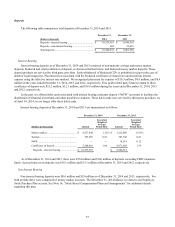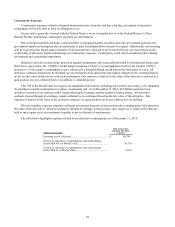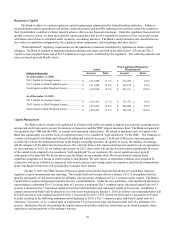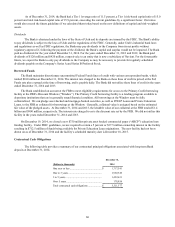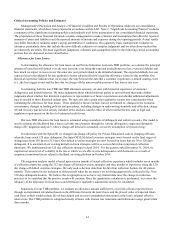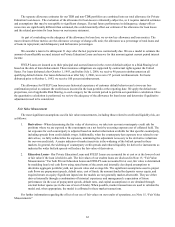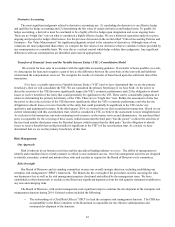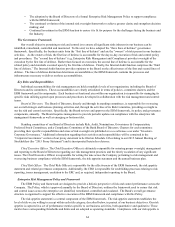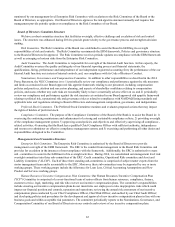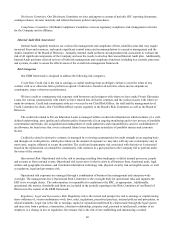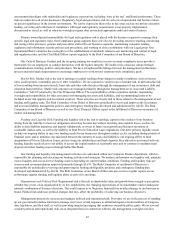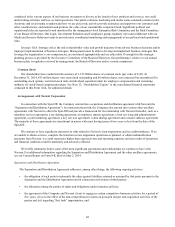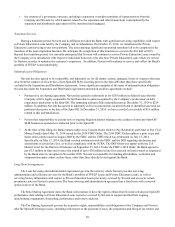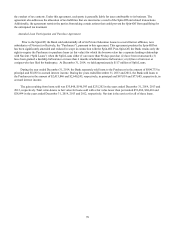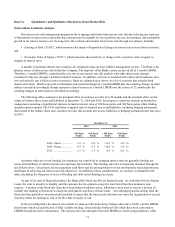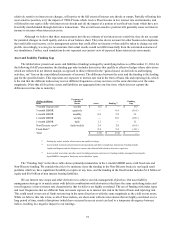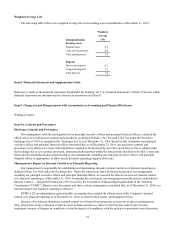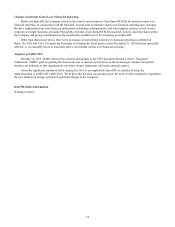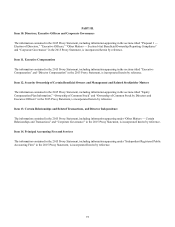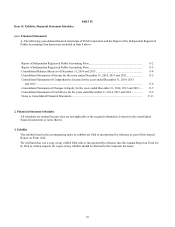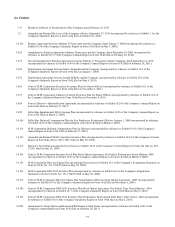Sallie Mae 2014 Annual Report Download - page 69
Download and view the complete annual report
Please find page 69 of the 2014 Sallie Mae annual report below. You can navigate through the pages in the report by either clicking on the pages listed below, or by using the keyword search tool below to find specific information within the annual report.environment that aligns with stakeholder and regulatory expectations, including “tone at the top” and Board performance. These
risks are inherent in all of our businesses. Regulatory, legal and governance risk are sub-sets of operational risk but have taken
on greater significance in the current environment. We can be exposed to these risks in key areas such as our private education
lending, servicing and collections if compliance with legal and regulatory requirements is not properly implemented,
documented or tested, as well as when an oversight program does not include appropriate audit and control features.
Primary ownership and responsibility for legal and regulatory risk is placed with the business segments to manage their
specific legal and regulatory risks. Our Compliance group supports these activities by providing extensive training, monitoring
and testing of the processes, policies and procedures utilized by our business segments, maintaining consumer lending
regulatory and information security policies and procedures, and working in close coordination with our Legal group. Our
Operational Risk Committee has oversight over the establishment of standards related to our monitoring and control of legal
and regulatory risks, and the Chief Risk Officer reports regularly to the Risk Committee of our Board of Directors.
Our Code of Business Conduct and the on-going training our employees receive in many compliance areas provide a
framework for our employees to conduct themselves with the highest integrity. We instill a risk-conscious culture through
communications, training, policies and procedures. We have strengthened the linkage between the management performance
process and individual compensation to encourage employees to work toward corporate-wide compliance goals.
Market Risk. Market risk is the risk to earnings or capital resulting from changes in market conditions, such as interest
rates, credit spreads, commodity prices or other volatilities. We are exposed to various types of market risk, in particular the risk
of loss resulting from interest rate risk, basis risk and other risks that arise through the management of our investment, debt and
education loan portfolios. Market risk exposures are managed primarily through the management-level, Asset and Liability
Committee ("ALCO") chaired by the Chief Financial Officer. The responsibilities of this committee include: maintaining
oversight and responsibility for risks associated with managing our assets and liabilities, and recommending limits to be
included in our risk appetite and investment structure. These activities are closely tied to those related to the management of our
funding and liquidity risks. The Risk Committee of our Board of Directors periodically reviews and approves the investment
and asset and liability management policies and contingency funding plan developed and administered by ALCO. The Risk
Committee of our Board of Directors as well as our Chief Financial Officer report to the full Board of Directors on matters of
market risk management.
Funding and Liquidity Risk. Funding and liquidity risk is the risk to earnings, capital or the conduct of our business
arising from the inability to meet our obligations when they become due without incurring unacceptable losses, such as the
ability to fund liability maturities and deposit withdrawals, or invest in future asset growth and business operations at
reasonable market rates, as well as the inability to fund Private Education Loan originations. Our three primary liquidity needs
include our ongoing ability to meet our funding needs for our businesses throughout market cycles, including during periods of
financial stress and to minimize any mismatch between the maturity of assets and liabilities; our ongoing ability to fund
originations of Private Education Loans; and servicing our indebtedness and bank deposits. Key objectives associated with our
funding liquidity needs relate to our ability to access the capital markets at reasonable rates and to continue to maintain retail
deposits and other funding sources through Sallie Mae Bank.
Our funding and liquidity risk management activities are centralized within our Corporate Finance department, which is
responsible for planning and executing our funding activities and strategies. We analyze and monitor our liquidity risk, maintain
excess liquidity and access diverse funding sources depending on current market conditions. Funding and liquidity risks are
overseen and recommendations approved primarily through ALCO. The Risk Committee of our Board of Directors is
responsible for periodically reviewing and approving the funding and liquidity positions and contingency funding plan
developed and administered by ALCO. The Risk Committee of our Board of Directors also receives regular reports on our
performance against funding and liquidity plans at each of its meetings.
Reputational and Political Risk. Reputational risk is the risk to shareholder value and growth from a negative perception,
whether true or not, of an organization by its key stakeholders, the changing expectations of its stakeholders and/or inadequate
internal coordination of business decisions. This could expose us to litigation, financial loss or other damage to our business or
brand. Political risk addresses political changes that may affect the probability of achieving our business objectives.
Management proactively assesses and manages political and reputational risk. Post-spin, we are in the process of standing
up our government relations function to manage our review of and response to all formal inquiries from members of Congress,
state legislators, and their staff, as well as providing targeted messaging that reinforces our public policy goals. We review and
consider political and reputational risks on an integrated basis in connection with the risk management oversight activities
67


